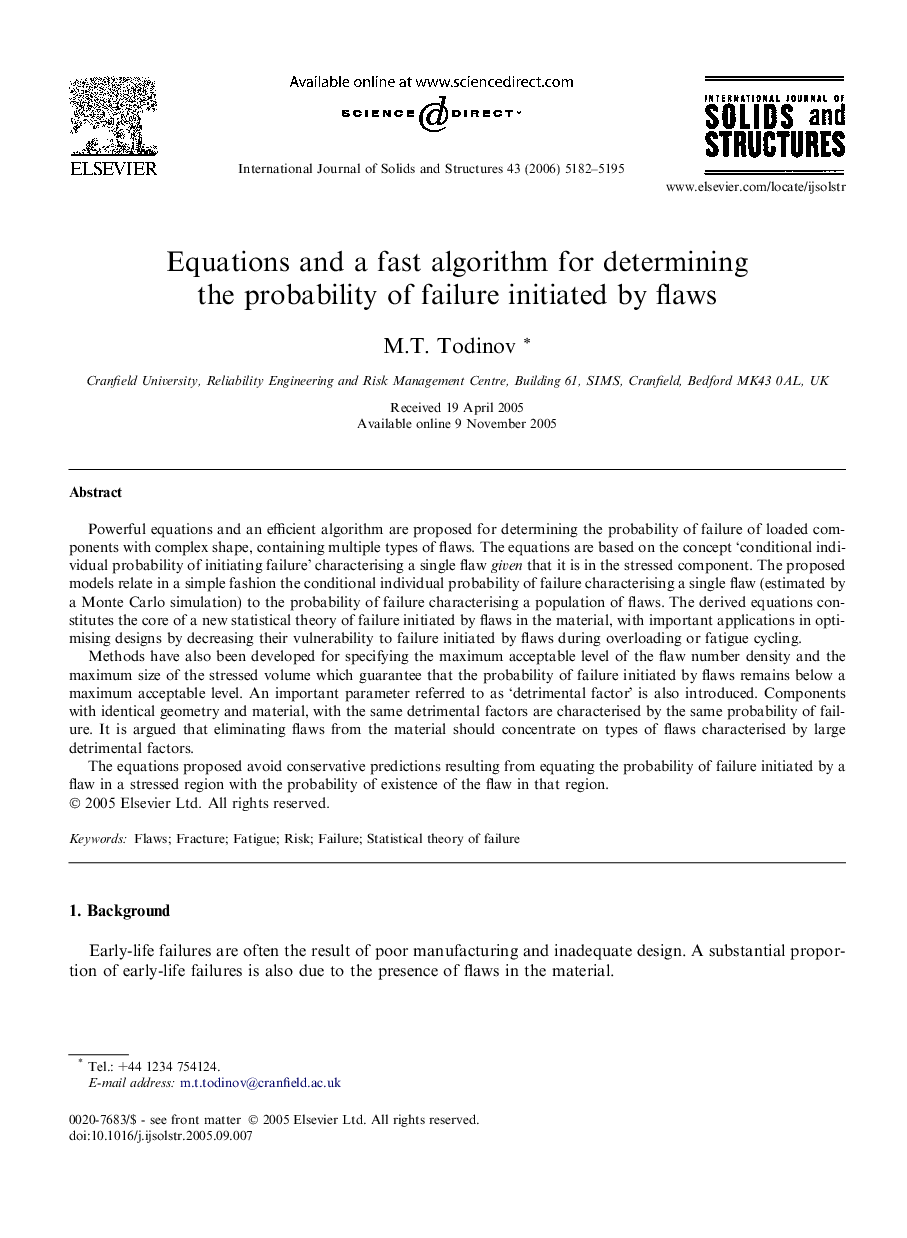| Article ID | Journal | Published Year | Pages | File Type |
|---|---|---|---|---|
| 280231 | International Journal of Solids and Structures | 2006 | 14 Pages |
Powerful equations and an efficient algorithm are proposed for determining the probability of failure of loaded components with complex shape, containing multiple types of flaws. The equations are based on the concept ‘conditional individual probability of initiating failure’ characterising a single flaw given that it is in the stressed component. The proposed models relate in a simple fashion the conditional individual probability of failure characterising a single flaw (estimated by a Monte Carlo simulation) to the probability of failure characterising a population of flaws. The derived equations constitutes the core of a new statistical theory of failure initiated by flaws in the material, with important applications in optimising designs by decreasing their vulnerability to failure initiated by flaws during overloading or fatigue cycling.Methods have also been developed for specifying the maximum acceptable level of the flaw number density and the maximum size of the stressed volume which guarantee that the probability of failure initiated by flaws remains below a maximum acceptable level. An important parameter referred to as ‘detrimental factor’ is also introduced. Components with identical geometry and material, with the same detrimental factors are characterised by the same probability of failure. It is argued that eliminating flaws from the material should concentrate on types of flaws characterised by large detrimental factors.The equations proposed avoid conservative predictions resulting from equating the probability of failure initiated by a flaw in a stressed region with the probability of existence of the flaw in that region.
